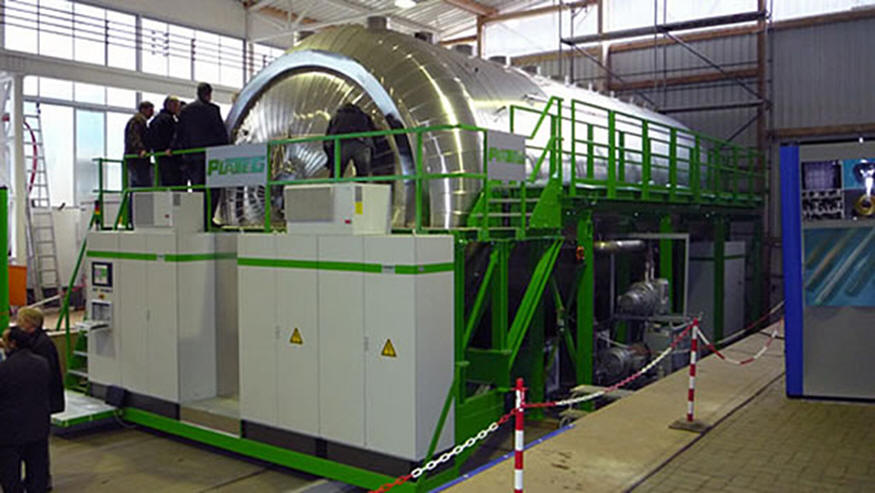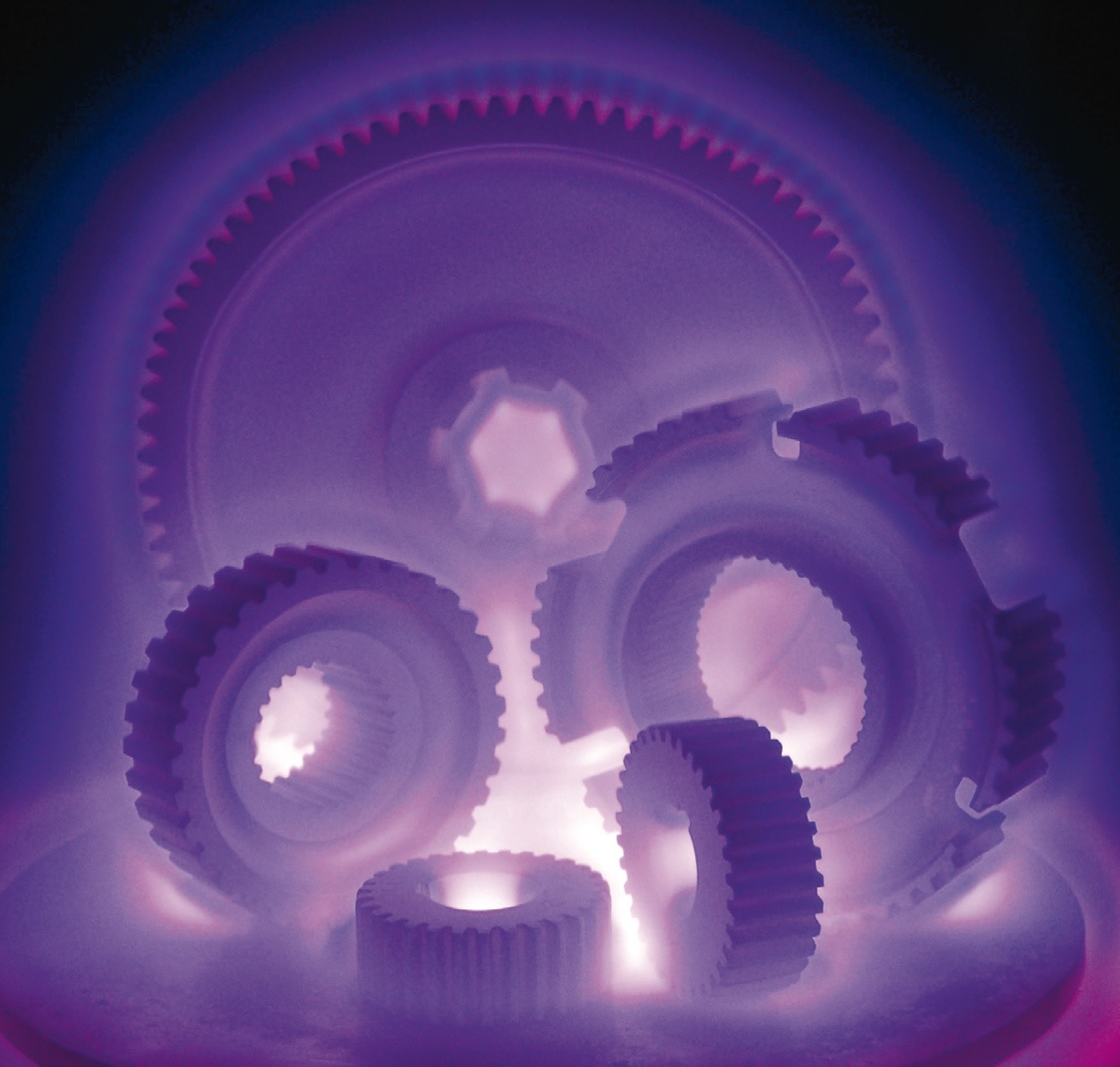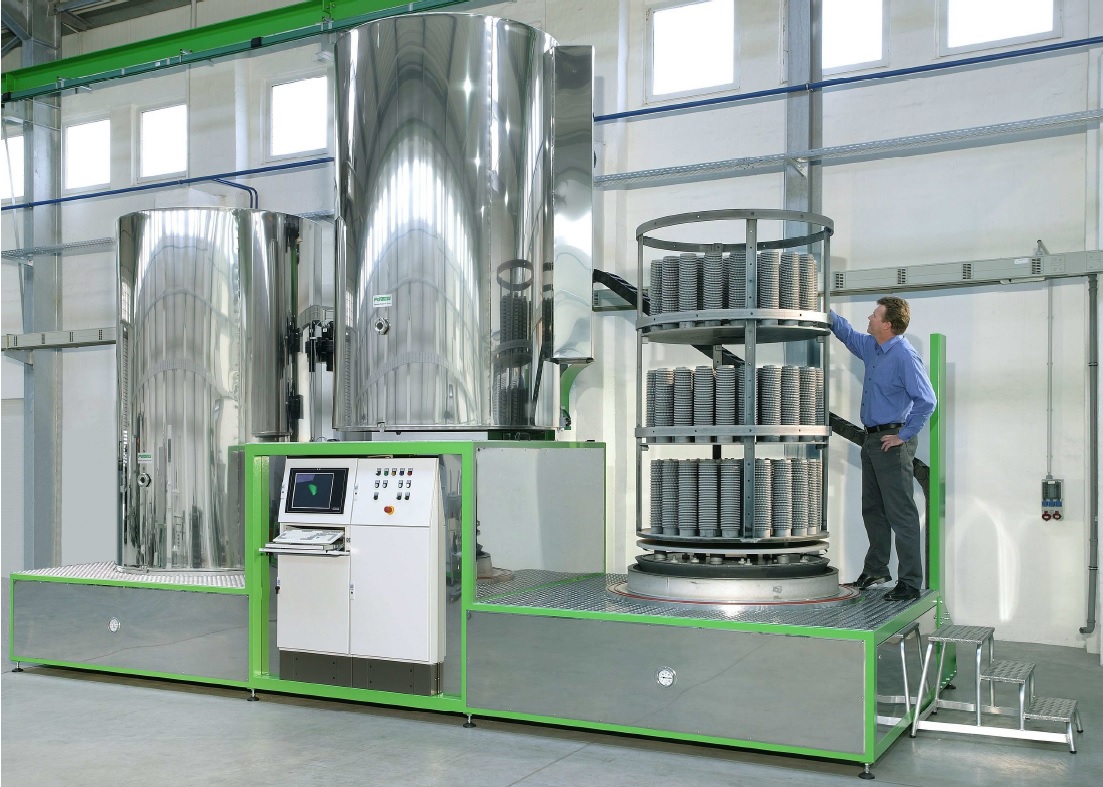 Plasma
Technik Grün GmbH (PlaTeG) is the subsidiary of PVA TePla AG
Plasma
Technik Grün GmbH (PlaTeG) is the subsidiary of PVA TePla AG
which specialize developing the PulsPlasma®
plant, especially the application of
PulsPlasma®Nitriding.
Since they developed
the first equipment, they have kept innovating
on the system. In current, the largest
Plasma-Nitriding plant was made by PlaTeG.
(the plant wall size is Ø 4300 x 10500 mm)
Nowaday, most of the plant of PlaTeG is vertical. Such as this design can enlarge to be the dual-plant system after the stable processing, and improves the utilization rate of equipment. The large plants adopt horizontal loading, which facilitate the placement and processing of the large workpieces.
Application:
|
1. PulsPlasma® Nitriding (PPN)/PulsPlasma Nitrocarburizing(PPCN)
|
|
2. PulsPlasma® Oxidizing(PPO)
|
|
3. PulsPlasma® Assisted Chemical Vapor Deposition(PPA CVD) for thin
film hard coatings (TiN, TiC, etc.)
|
|
4. PulsPlasma® Surface processing
|
|
5. PulsPlasma® Cleaning and Activation(PPCA)
|
|
Applied Materials: 1. ordinary carbon steel 2. cast iron 3. Nitriding steel 4. cold/hot mold steel 5. tool steel 6. martensite aging steel 7. stainless steel 8. high speed steel |
 |
The Pulsplasma® nitriding has become a mature and stable process. Compared to traditional technologies, such as gas nitriding and salt bath nitridation, there are lots of adventages.
|
1. Process safety - There is no need to add and no possible to
produce the toxic gas. It's environmentally-friendly and won't
charge additionally.
|
|
2. High efficiency nitriding - Low process gas
|
|
3. Through the setting of process, the nitrided layer structure on
the workpieces(compound layer and diffusion layer) can be monitored.
|
|
4. Parcial nitriding on a workpieces is coverd with mechanical
covers.
|
|
5. Steels containing chromium or non-ferrous metals such as Titanium
and Aluminum can carry on the process of surface nitriding.
|
|
6. Processing at the lower temperature from 350°C to 600°C- Surface
treatment is also possible for cold mold steel or workpieces
requiring low-shaped variables.
|
PlaTeG-PulsPlasma® technique provides the solution to avoid the situations of DC Plasma.
1. The production of thermal energy which depends on DC Plasma causes uneven temperature distribution and makes the workpieces melted by regional overheating; therefore, limited size of the plant will be necessary. Though the latest technique, Insulated Gate Bipolar Transistor(IGBT), PlaTeG is able to modulate higher frequency impulse sources, allowing electrical control in the furnance. Thus, the temperature control components can monitor ranging ± 5 °C precisely in all areas. The size of furnance won't be limited cause of the averange temperature distribution.
2. DC Plasma is difficult to process the workpieces which have holes. Those areas of holes will be melted easily. PlaTeG adopts the pulsed voltage and current to process smaller holes.
3. The situation that DC Plasma arc easily and randomly is probable to harm workpieces. PulsPlasma® almost won't arc during the process.


